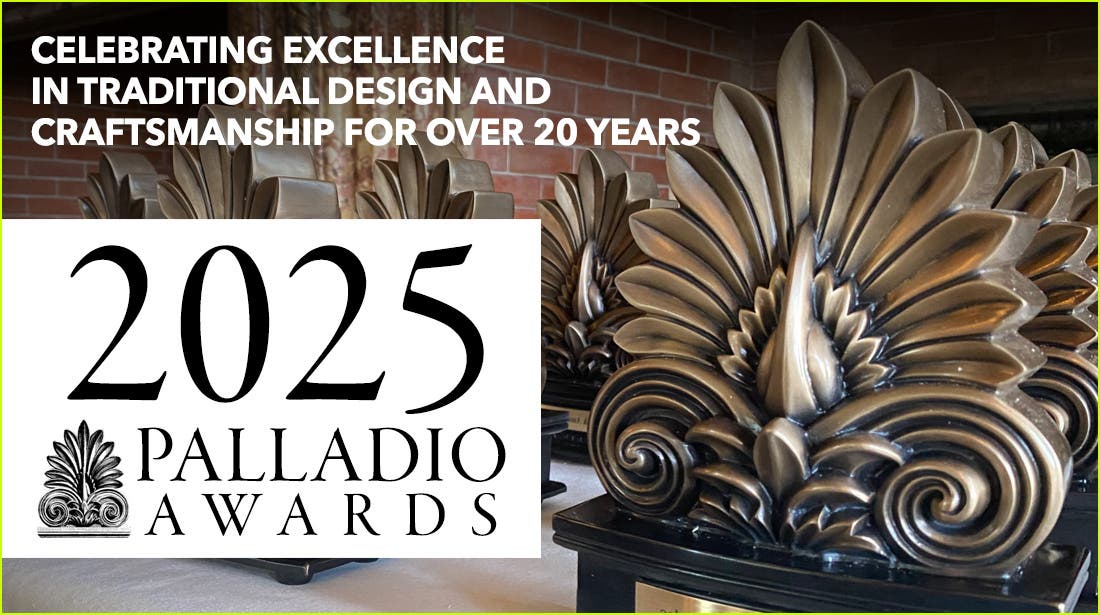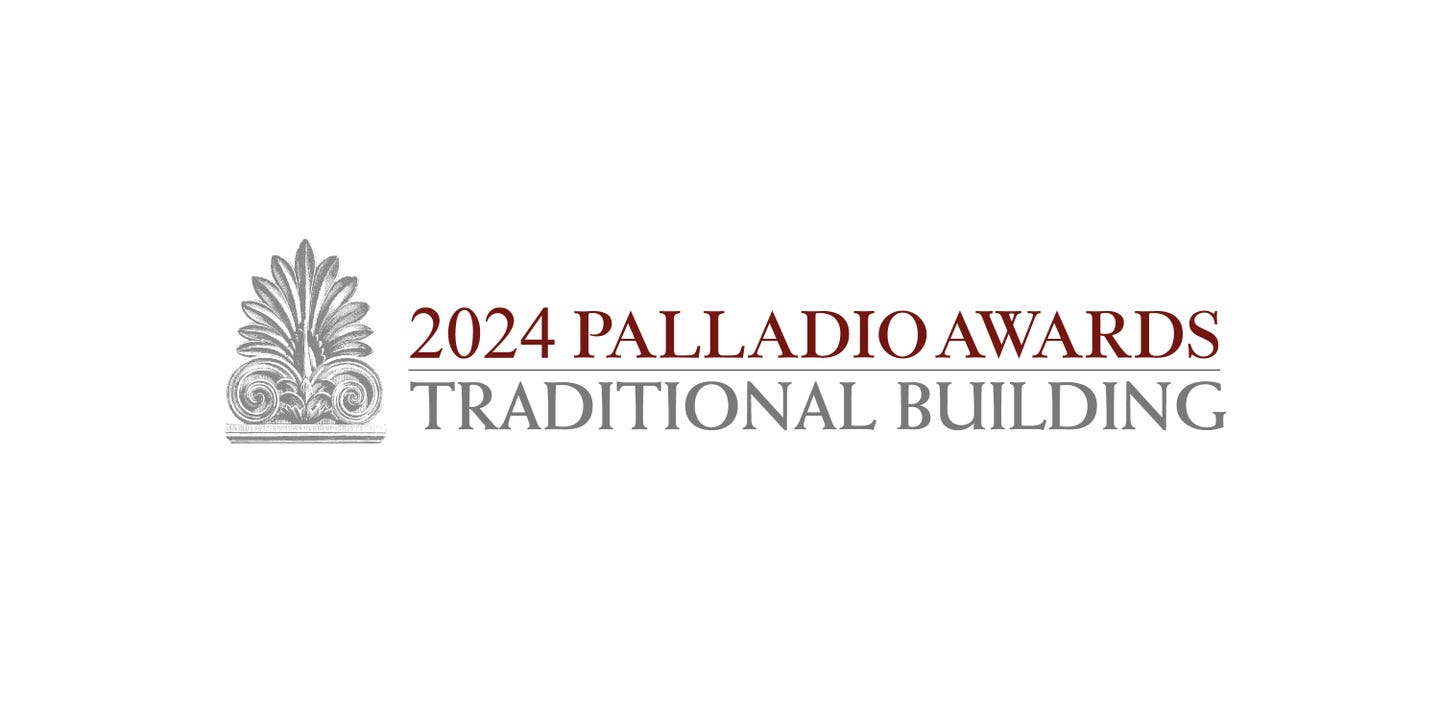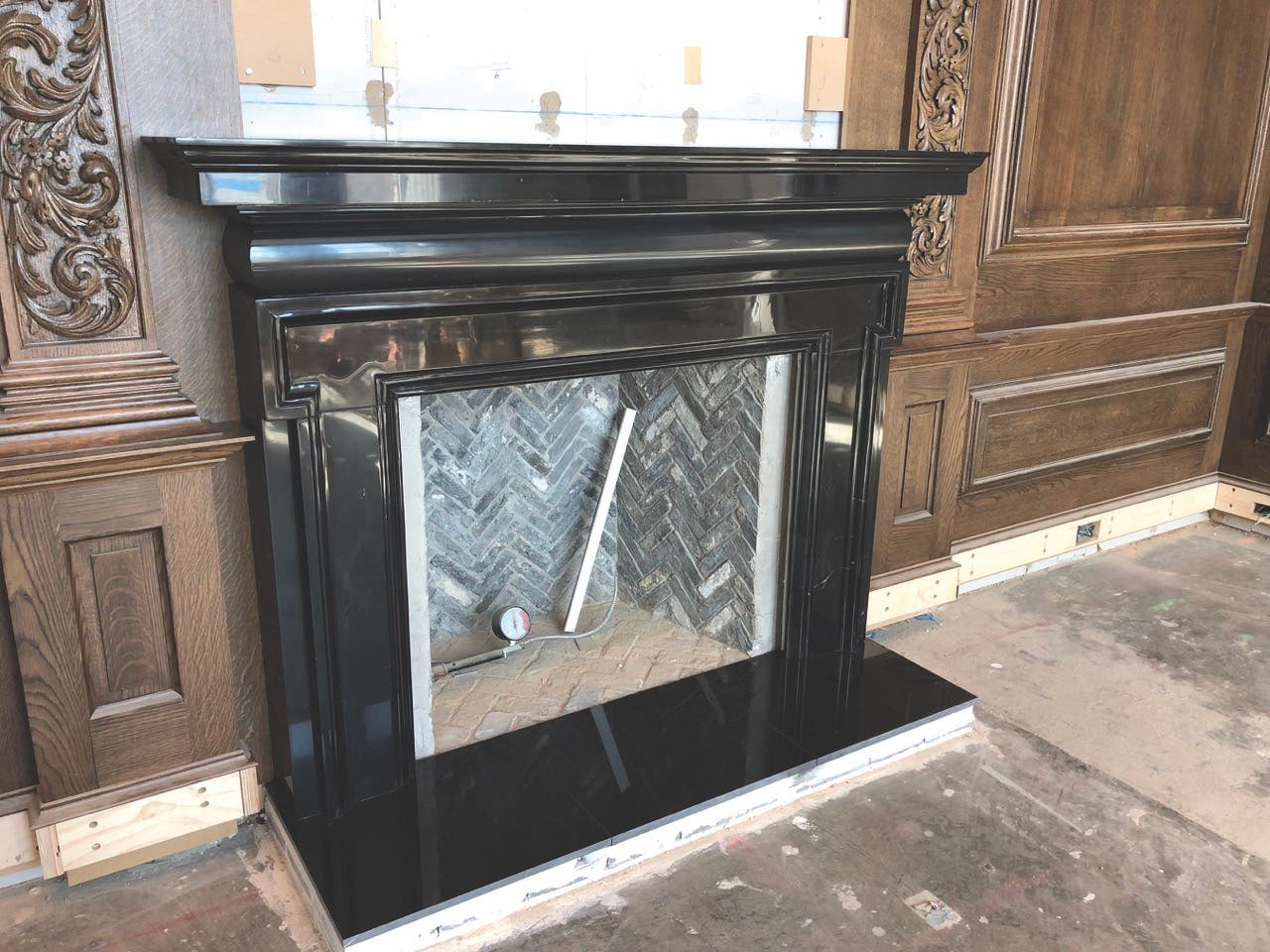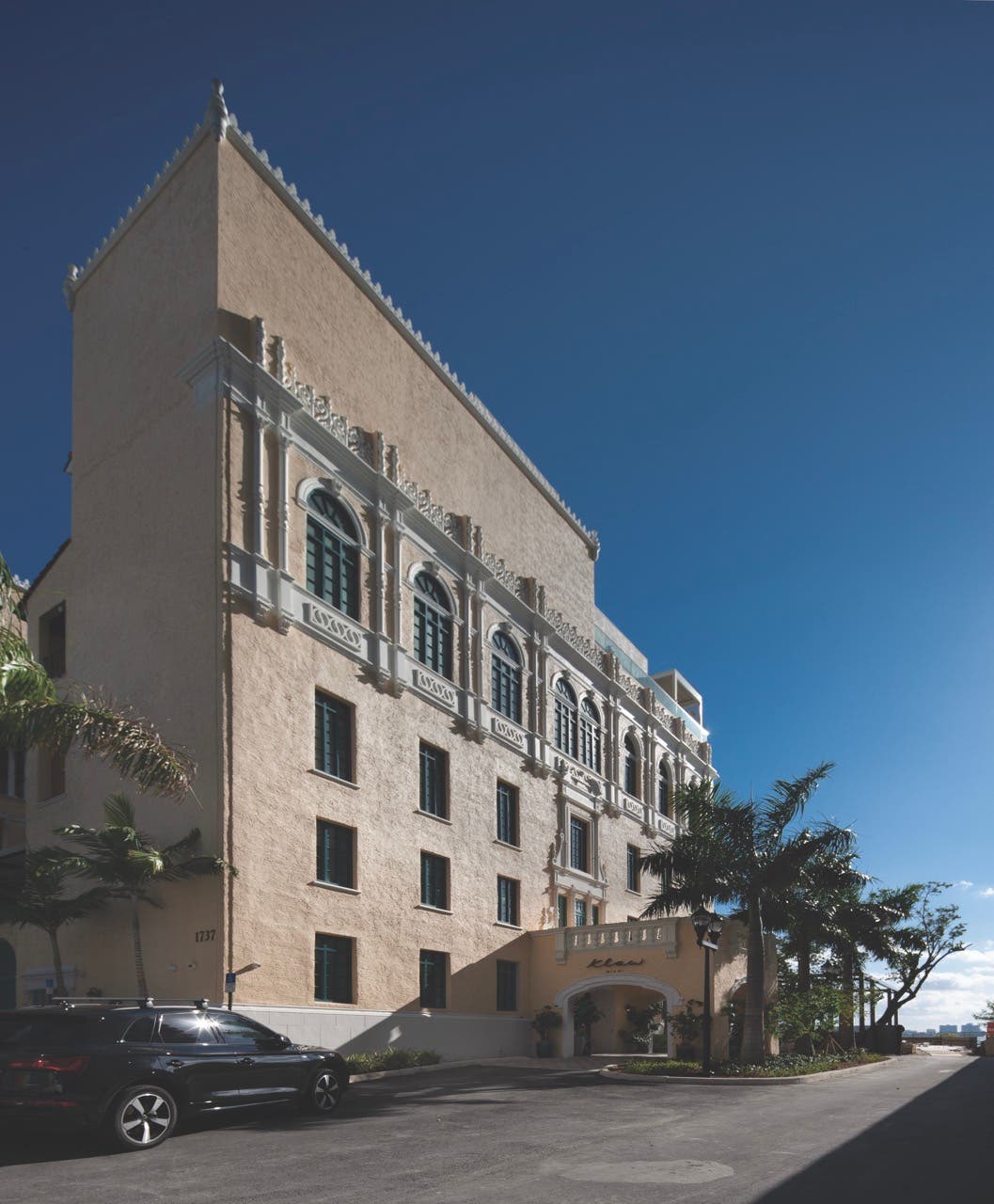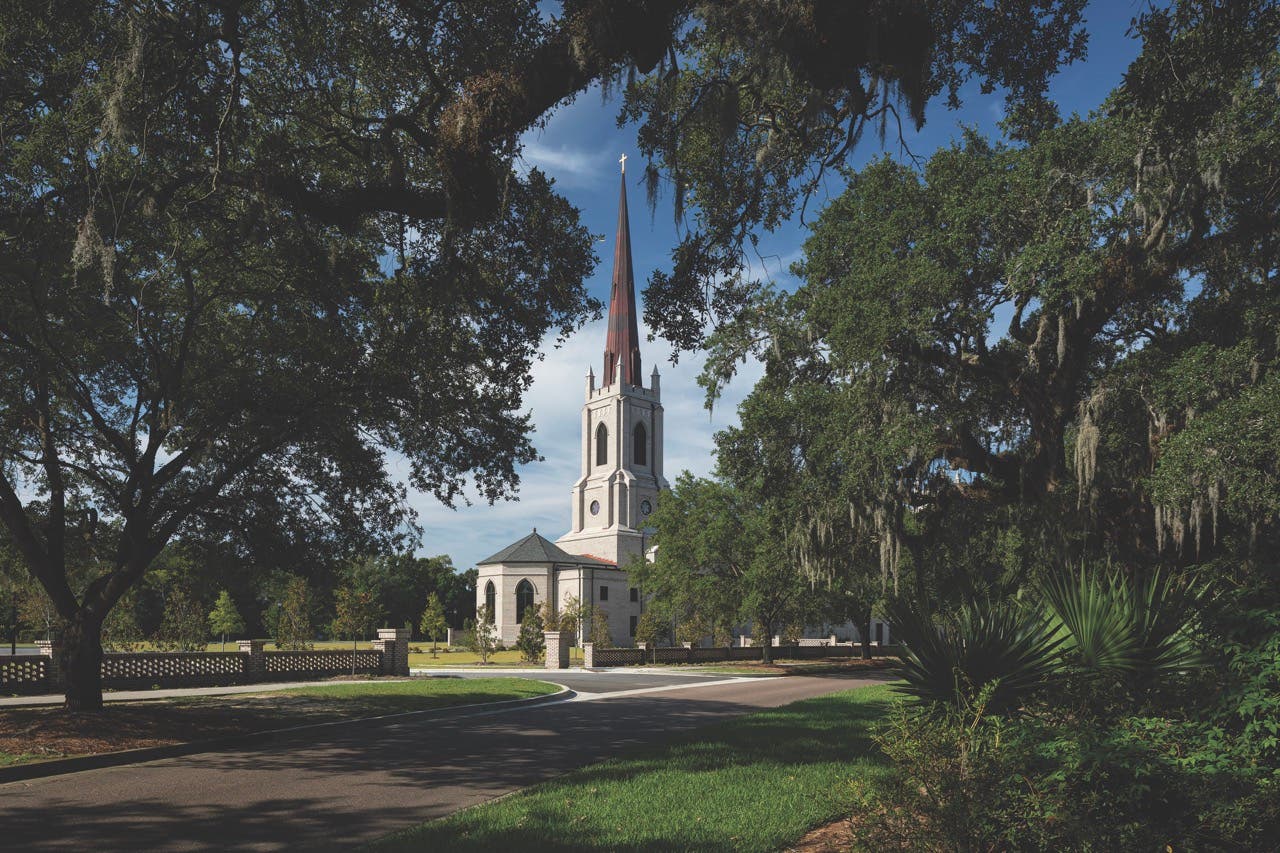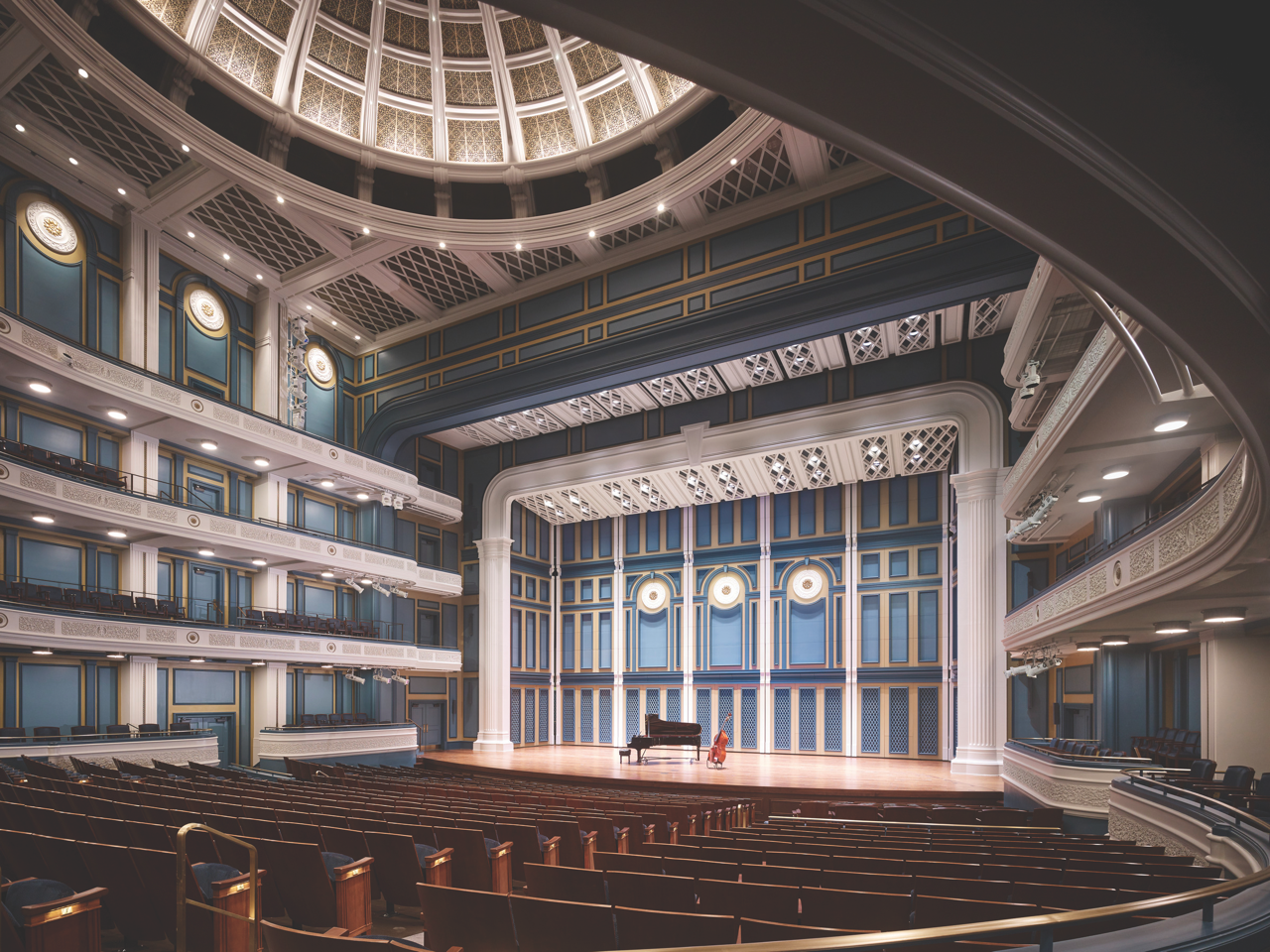
Palladio Awards 2023
The Fisher Center for the Performing Arts at Belmont University
Belmont University’s Fisher Center for the Performing Arts, an architectural and acoustical tour de force, is a transformative landmark in the music-centric city of Nashville.
With its Indiana limestone facade and Blue Pearl granite base, the 150,000-square-foot Neo-Renaissance-style building is the crown jewel and final piece of the university’s ambitious performing arts district, which was designed by Nashville-based ESa and which includes an 850-seat concert hall, 325-seat drama theater, and a 5,000-seat multi-use event center.
The $163-million Fisher Center, ESa’s latest project for the university, is a grand addition defined by ornate composite columns, a trio of soaring arched art-glass windows, and a pair of ornamental octagonal cupolas flanking dual wings.
It is rooted in the university’s classic architecture, including the original residential estate, which dates to the mid-1800s and was designed by Prussian architect Adolphus Heiman in the Italianate Renaissance style.
The structure contains a 1,700-seat main theatrical auditorium with a proscenium connection to a 90-foot-high 7,900-square-foot stagehouse with a full fly tower, wing space, orchestra pit, two forestage lifts, and a trap room. The hall is also equipped with broadcast capabilities.
The 8,000-square-foot grand lobby is flanked by two 3,500-square-foot adjacent recital halls, each with different acoustic capabilities: One is designed for acoustic performances; the other has variable acoustics for amplified or natural acoustic performances. The halls can be combined with the main lobby to create an event space that seats 900.
One of the more notable architectural features of The Fisher Center is an acoustically transparent dome in the main hall that rises more than 70 feet from the floor to its apex. Sound passes through its decorative grillwork and uses the resonant chamber above to enhance the natural acoustics of the space.

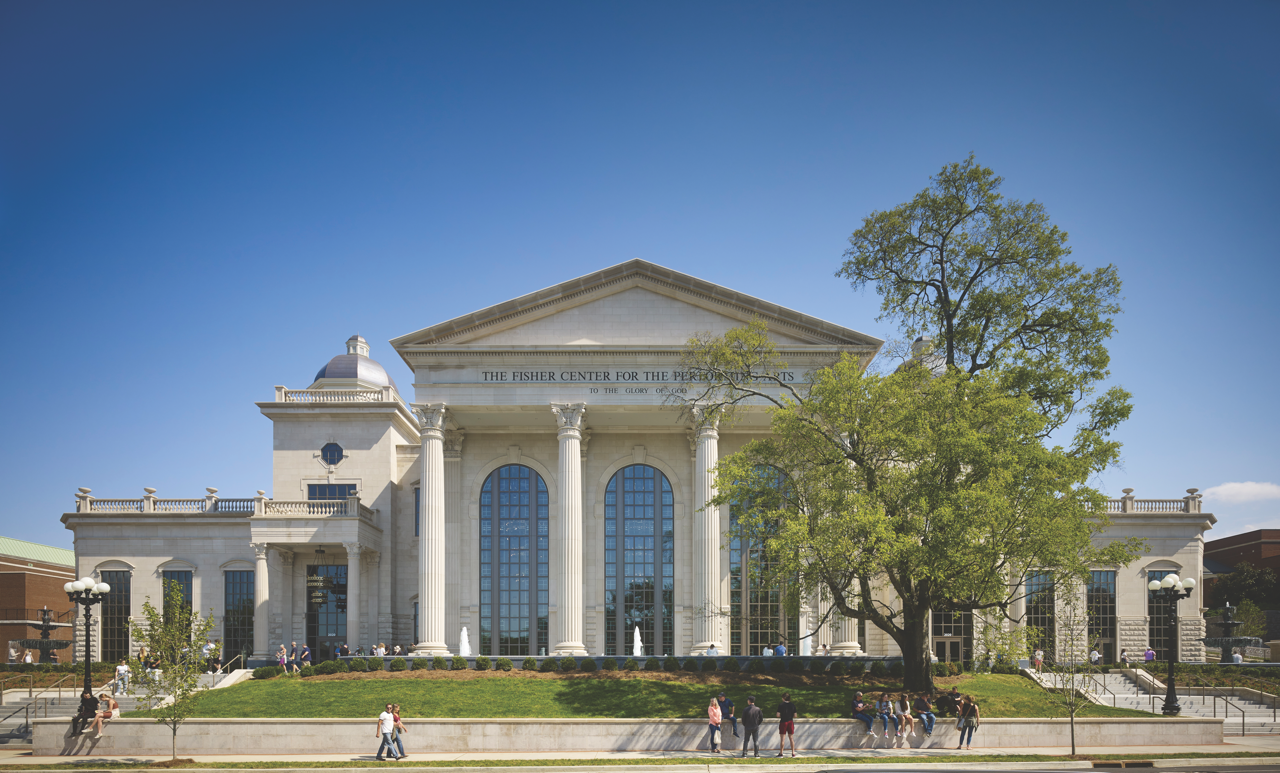
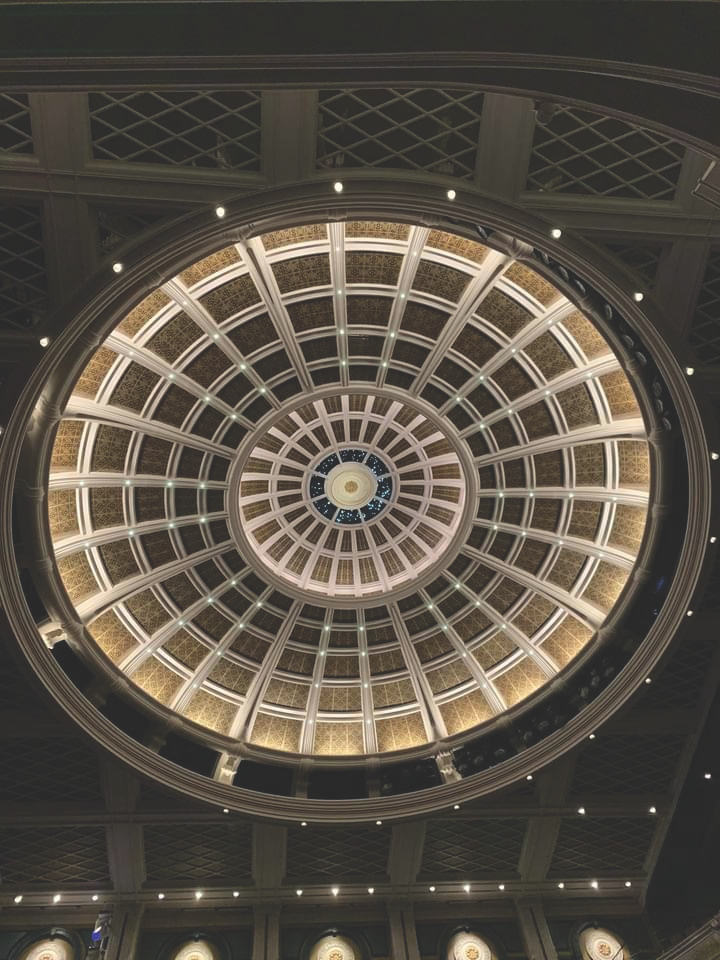
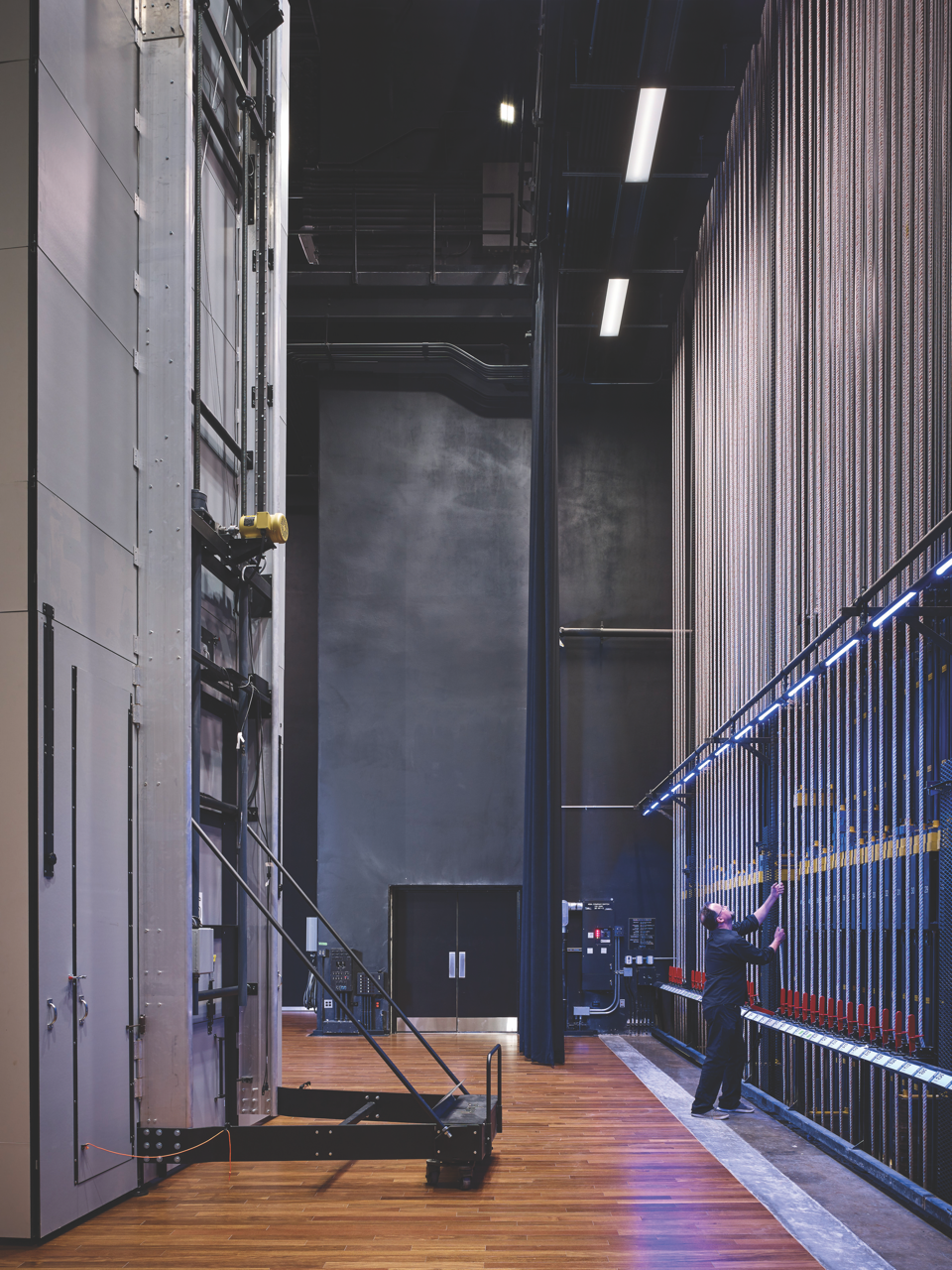
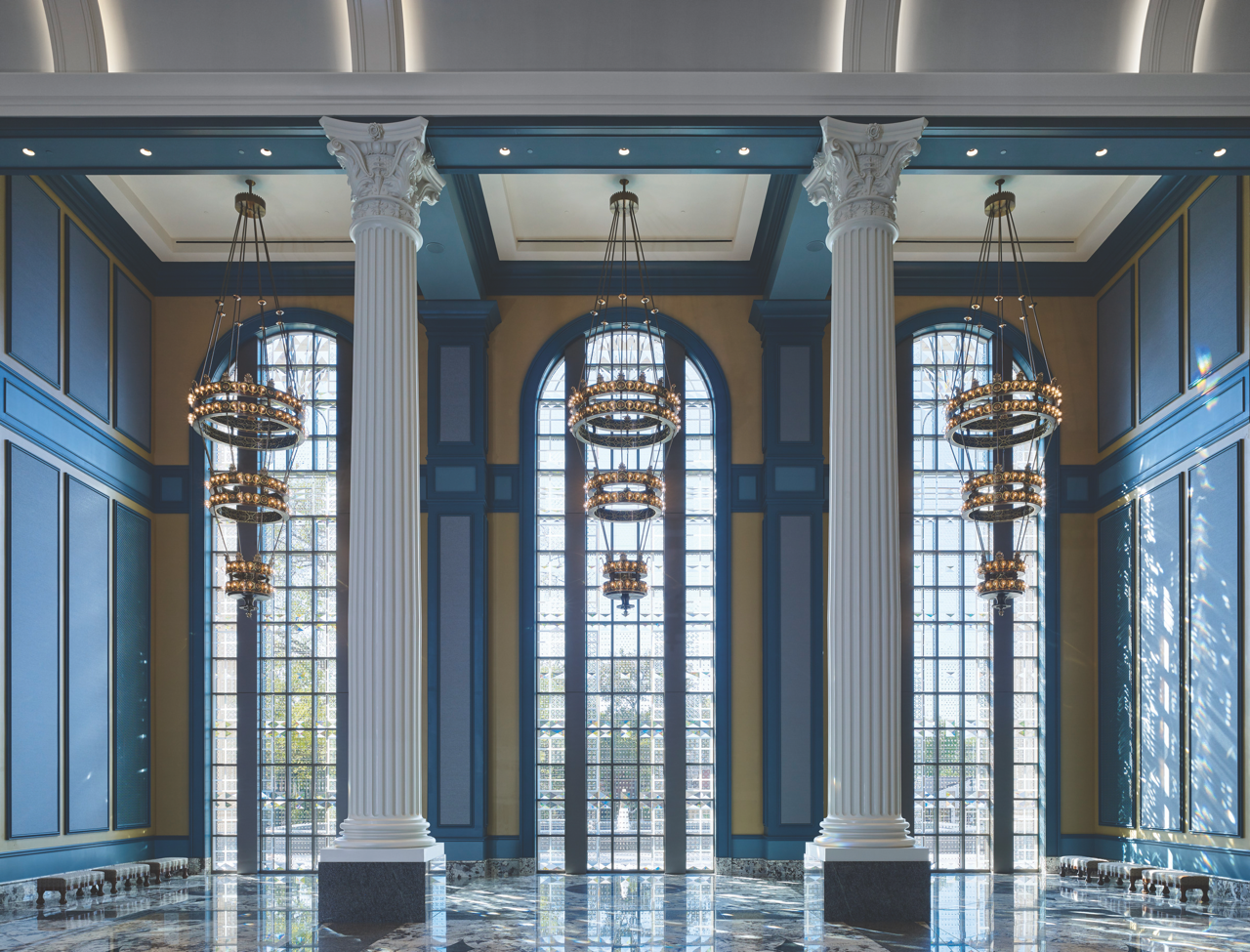
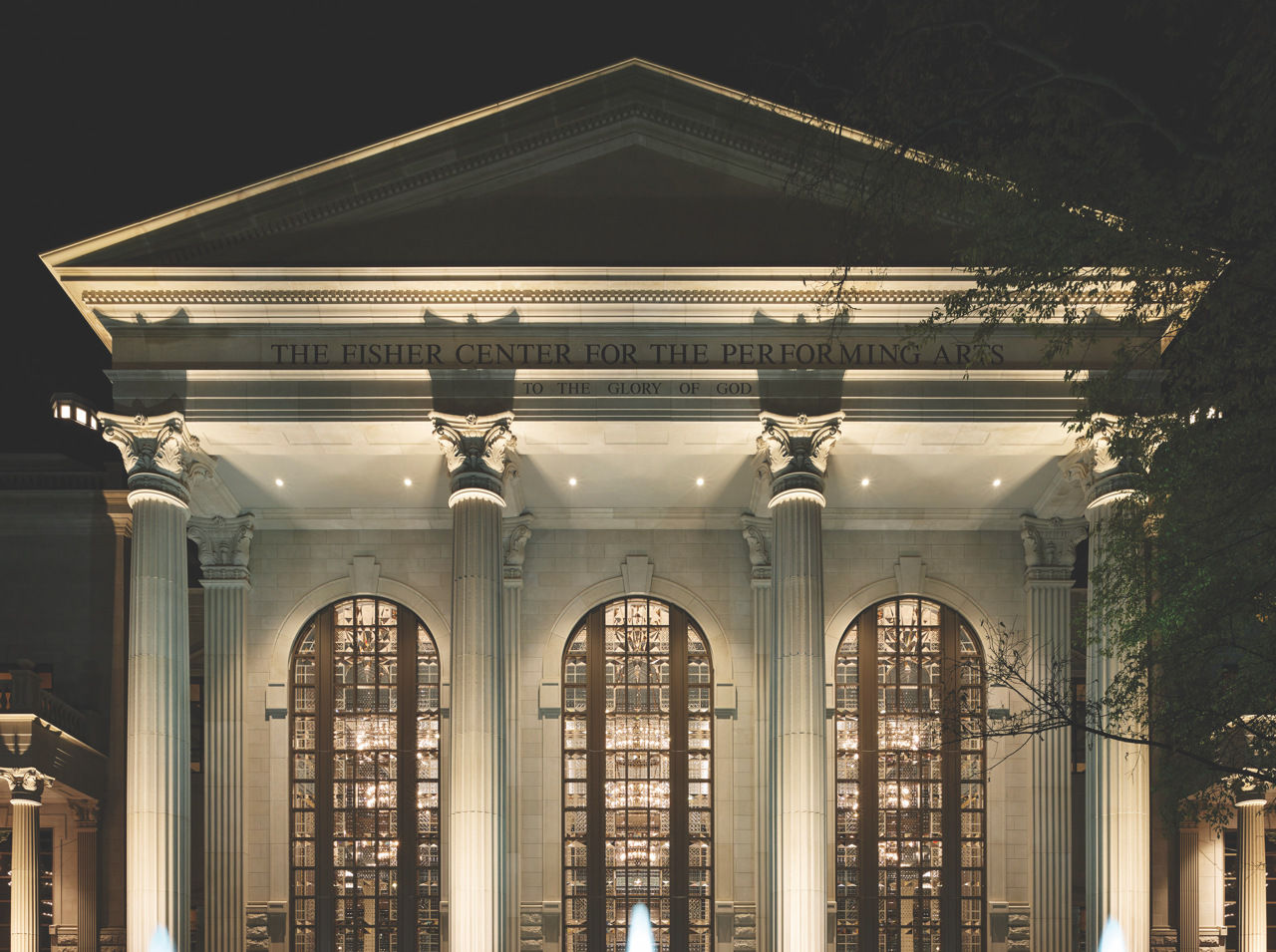
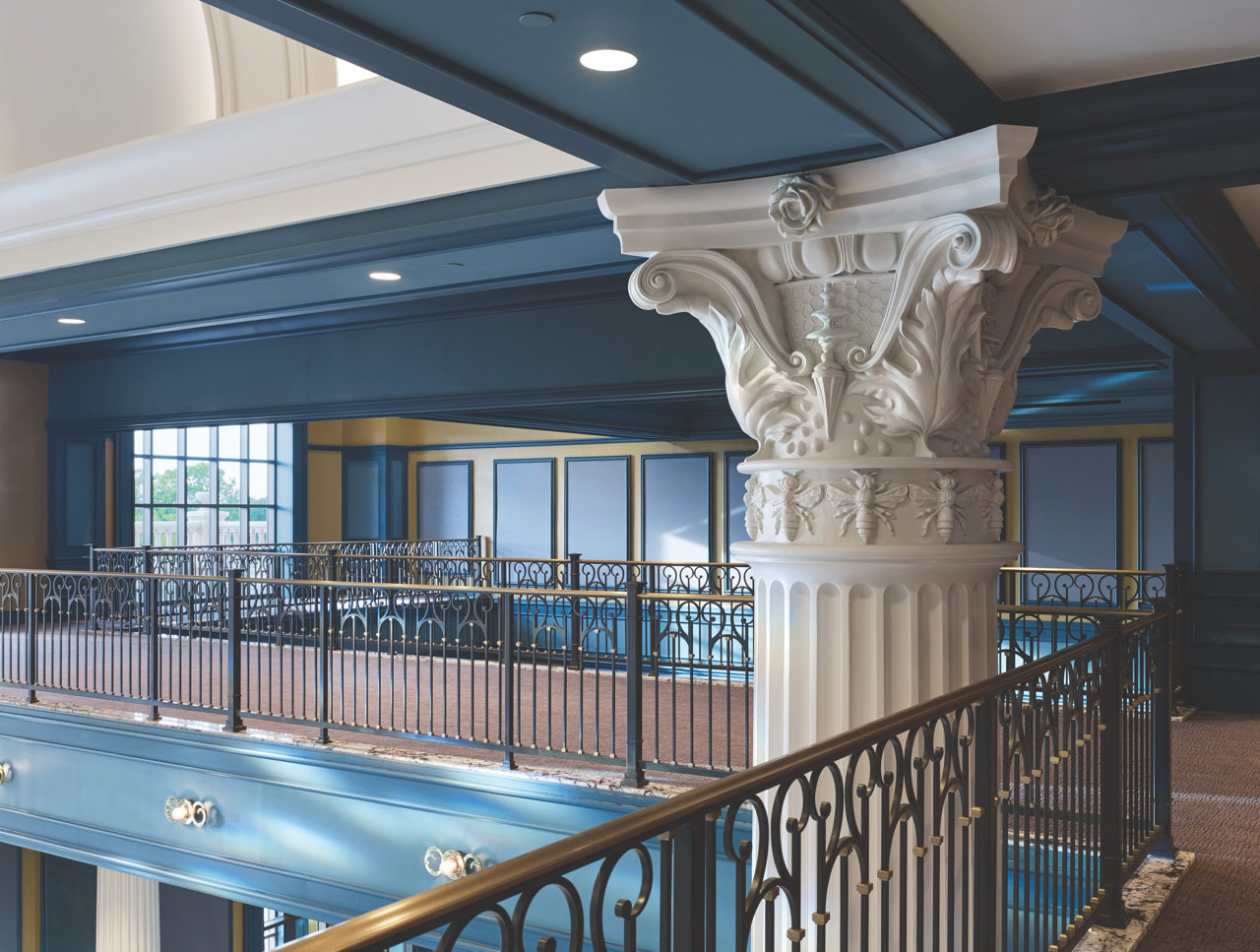
The Fisher Center was completed under a strict timeline: The team had only four years, instead of the six to seven typically required for a structure of this stature. There also were physical restraints. The site was not quite large enough to accommodate the program, which included a substantial loading dock. A street had to be rerouted, and an elevated pedestrian walkway was added as a result.
The drastic grade change—it was 60 feet from west to east—meant that the dock had to be located at the front of the building, where it is concealed behind a palatial wall and iron gates.
Primarily an educational facility, The Fisher Center “allows students to learn on stage and back stage and front of house and to see professionals at work,” says ESa principal David Minnigan, AIA, IIDA, LEED AP. The Fisher Center also has a strong community component, which Nashville, known as Music City, USA, has really taken to heart.
The structure, which faces the street to embrace the community and invite members of the public in, “is special,” says Minnigan, whose team included project managers Darrell Lambert, AIA, and Randy Nale, AIA, and interior designer Janet Wennerlund, IIDA, ASID, NCIDQ.
The front facade’s dramatic arched windows, which allow those who pass by to view the ongoing activities, feature dichroic art-glass elements on the interior that act as prisms.
“Most of the performances are in the afternoons or the evenings, and the art glass sparkles and dances,” Minnigan says. “The Fisher Center faces west, and when the sun comes in, the light is refracted, creating a rainbow of colors that pick up the sparkle in the granite floors.”
The illumination, he adds, makes the lobby’s 29-foot-high chandeliers “look like they’re twirling,” which highlights the connection between what’s happening inside and what’s going on outside.”
The Fisher Center’s ballroom, which was designed to do duty as an events/lobby space, has become a favorite place for Nashville residents to hold fund-raisers and other events. After the official ribbon-cutting, in 2021, The Fisher Center invited the Nashville Ballet, Nashville Opera, and Nashville Symphony to use the space.
“The production of Wagner’s ‘Das Rheingold’ was just extraordinary at the center,” Minnigan says. “The opera had never been able to do something of this scale in Nashville before. They were able to hire a national cast.” TB
Key Suppliers
Architect
Contractor
R.C. Mathews Contractor
Acoustics
Akustiks LLC
Theatre Planner
Theatre Projects
Interior Art Glass for Arched Windows
Kaiser/vonRoenn Studio
Limestone Fabrication
Manufacturer of Orchestra Shell
Wenger




